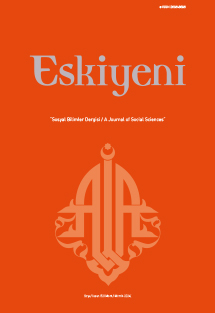Başörtüsü Örtmeyi Bırakan Kadınların Dinî Yaşantılarında Farklılaşan Tecrübeleri Üzerine Nitel Bir Araştırma
A Qualitative Study on the Differentiated Experiences in the Religious Lives of Women Who Stopped Wearing the Headscarf
Author(s): Kemal Ataman, Muhammet Numan SağırlıSubject(s): Sociology of Religion
Published by: Anadolu İlahiyat Akademisi
Keywords: Sociology of Religion; Religiosity; Secularization; Headscarf; Representation-Identity Burden;
Summary/Abstract: The headscarf (hijab) is among the essential elements of women's dress code in the mainstream Islamic tradition. Having an important place in the clothing practices of Muslim women with its religious dimension, the headscarf has come to the fore with different dimensions throughout its historical journey in Türkiye. Today, new phenomena related to the headscarf in Türkiye have emerged. The most recent of these phenomena is women's decision to stop wearing the headscarf. This phenomenon, which has gained visibility especially in the last decade, has brought many debates with itself. The fact that the headscarf is also a religious symbol has also brought to the agenda debates about women who stop wearing the headscarf and their relationship with religion. The research explores the relationship between women who have stopped wearing the headscarf and their religiosity. Employing a phenomenological research design, it centers on the lived experiences of twenty-two participants, aged 23 to 43, with an average age of 29, characterized by university education, employment, and the decision to discontinue wearing the headscarf. Semi-structured interviews, conducted between March and June 2020, make up the primary data corpus. Methodologically, purposive and snowball sampling techniques were employed to form the participant cohort. After data collection, content analysis, facilitated by MAXQDA software, was utilized to discern emergent patterns and themes. The analysis yields four distinct dimensions delineating the relationship between headscarf cessation and religiosity, thus illuminating intricate facets of this phenomenon: 1. Increase in devotion, curiosity, and sincerity to institutional religion; 2. Maintaining the level of relationship with institutional religion; 3. Partial disengagement from institutional religion; and 4. Complete deterioration and abandonment of institutional religion. The research concludes that stopping wearing a headscarf does not necessitate disengagement from institutional religion in every case. It further concludes that the process may differ from person to person depending on the experiences of individuals and that new religious/Islamic interpretations vis-à-vis the subject matter can relatively affect the nature and the direction of the process.
Journal: Eskiyeni
- Issue Year: 2024
- Issue No: 52
- Page Range: 9-30
- Page Count: 22
- Language: Turkish

